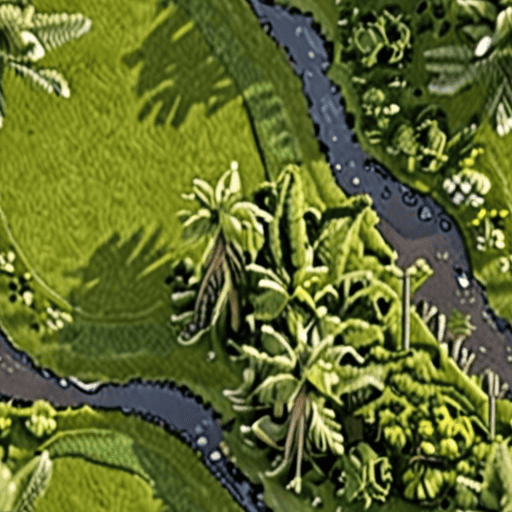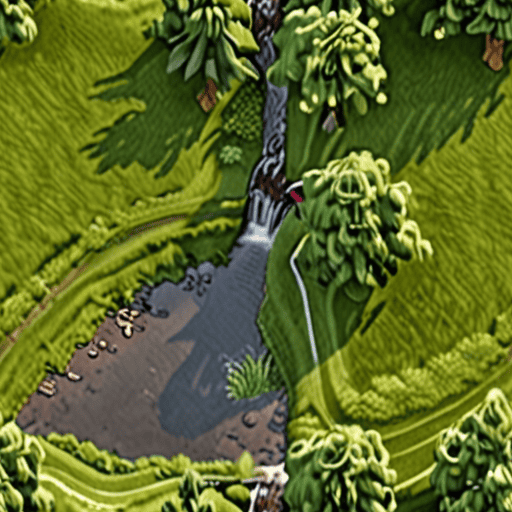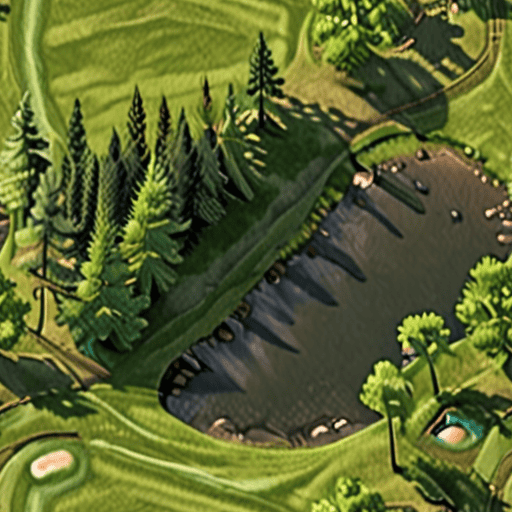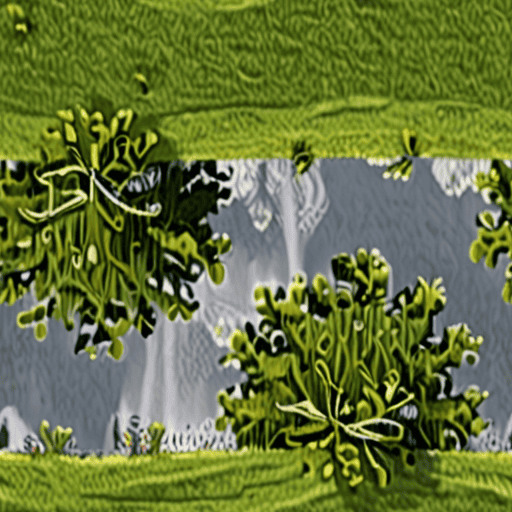As we navigate through our daily lives, it’s easy to overlook one of our most precious resources: water. However, conserving water is crucial for ensuring its availability for future generations, reducing waste, and mitigating the impacts of climate change. With numerous simple yet effective strategies available, making conscious choices about water usage can significantly contribute to a more sustainable future. From implementing water-saving devices in the kitchen to adopting eco-friendly gardening practices, there are countless ways to reduce your water footprint.

20 Ways to Save Water
We’re committed to helping you live a more sustainable life, which is why we’ve compiled this list of 20 effective ways to conserve water.
-
Fix Leaks
A single dripping faucet can waste up to 20 gallons of water per day. Check your pipes and faucets regularly to catch any leaks early on.
-
Take Shorter Showers
Try to limit your showers to five minutes or less to reduce water usage. You can also install low-flow showerheads to further decrease your water consumption.
-
Turn Off the Tap While Brushing
This simple habit can save up to four gallons of water per day. Make it a point to turn off the tap while brushing your teeth or washing your hands.
-
Install Low-Flow Fixtures
Replace old toilets and sinks with low-flow fixtures to significantly reduce your water usage. These fixtures use advanced technology to minimize water consumption without compromising performance.
-
Harvest Rainwater
Collect rainwater in barrels or cisterns to use for watering plants, washing cars, or other non-potable purposes. This can greatly reduce your water bill and dependence on municipal supplies.
-
Avoid Using the Car Wash
Use a Pool Cover
A pool cover can prevent evaporation and reduce chemical usage, saving up to 30,000 gallons of water per year.
-
Water Plants Efficiently
Use drip irrigation systems or soaker hoses to deliver water directly to plant roots, reducing runoff and evaporation.
-
Choose Drought-Tolerant Plants
Select plants that require minimal watering, such as succulents or native species, to reduce your water consumption.
-
Use a Broom Instead of a Hose
Sweep your driveway, sidewalk, or patio instead of hosing it down to save water and reduce erosion.
-
Install a Grey Water System
Reuse water from sinks, showers, and washing machines for irrigation and flushing toilets to reduce potable water demand.
-
Conserve Water for Irrigation
Use mulch, compost, or other soil amendments to retain moisture in the soil, reducing the need for frequent watering.
-
Check for Water-Efficient Appliances
Look for appliances with the WaterSense label, which indicates they meet EPA standards for water efficiency.
-
Monitor Your Water Meter
Keep track of your water usage to identify leaks, detect hidden problems, and optimize your conservation efforts.
-
Support Water Conservation Initiatives
Participate in local water-saving programs, attend community events, and advocate for water-efficient policies in your area.
-
Implement Xeriscaping
Design landscapes that use drought-tolerant plants, efficient irrigation systems, and clever design techniques to minimize water consumption.
-
Use a Water-Efficient Washing Machine
Front-loading washing machines use significantly less water than top-loading models, making them a great choice for water-conscious households.
-
Fix Clogged Drains
Clear clogs and blockages in drains to prevent water waste and potential backups.
-
Use a Dishwasher
Running a full load in a dishwasher uses less water than washing dishes by hand, making it a more water-efficient option.
-
Collect Condensation
Install a condenser coil or use a dehumidifier to collect and reuse water vapor from air conditioning units or refrigerators.
-
Use a Rain Barrel
Store rainwater in a barrel or cistern to use for irrigation, car washing, or other non-potable purposes.
-
Implement a Water Budget
Set realistic goals and track your progress to stay on top of your water conservation efforts.
-
Support Water-Efficient Technologies
Invest in innovative technologies, such as smart sensors or automated irrigation systems, to optimize your water usage.
-
Participate in Community Water Conservation Efforts
Join local initiatives, attend workshops, and engage with your community to promote water conservation and sustainability.
-
Monitor and Maintain Your Plumbing
Regularly inspect and maintain your plumbing system to prevent leaks, detect issues early, and ensure optimal water efficiency.
-
Use a Water-Efficient Toilets
Install low-flow toilets or dual-flush toilets to significantly reduce your water consumption.
-
Implement a Water-Efficient Lawn Care Routine
Use drought-tolerant grasses, implement efficient irrigation systems, and adopt mowing techniques that promote healthy lawn growth while minimizing water usage.
50 Ways to Save Water
We’re committed to helping you live a more sustainable life, which is why we’ve compiled this list of 50 ways to save water.
-
Fix Leaks
A single dripping faucet can waste up to 20 gallons of water per day. Check your pipes and faucets regularly to catch any leaks early on.
-
Take Shorter Showers
Try to limit your showers to 5 minutes or less to conserve water and energy.
-
Install Low-Flow Fixtures
Low-flow showerheads and toilets can significantly reduce your water usage.
-
Harvest Rainwater
Collect rainwater in a barrel or cistern to use for watering plants or washing cars.
-
Use a Water-Efficient Washing Machine
Look for a washing machine with the ENERGY STAR label to ensure it uses minimal water and energy.
-
Turn Off the Tap While Brushing
This simple habit can save up to 4 gallons of water per day.
-
Plant Drought-Tolerant Plants
Choose plants that require minimal watering to reduce your outdoor water usage.
-
Use a Broom Instead of a Hose
Sweep your driveway or sidewalk instead of hosing it down to save water and prevent erosion.
-
Install a Grey Water System
Redirect water from sinks, showers, and washing machines to irrigate plants and gardens.
-
Use a Water Filter
Instead of buying bottled water, install a filter at home to reduce plastic waste and conserve water.
-
Conserve Water for Irrigation
Water your lawn and garden during cooler parts of the day to minimize evaporation.
-
Use a Pool Cover
Reduce evaporation and keep your pool clean with a cover.
-
Install a Rain Sensor
Automatically turn off your sprinkler system when it rains to prevent overwatering.
-
Use a Drip Irrigation System
Deliver water directly to plant roots to reduce evaporation and runoff.
-
Check Your Water Meter
Monitor your water usage to detect leaks and identify areas for improvement.
-
Use a Water-Efficient Dishwasher
Look for a dishwasher with the ENERGY STAR label to ensure it uses minimal water and energy.
-
Install a Sensitive Flow Controller
Regulate water pressure to prevent wasting water due to high pressure.
-
Use a Sprinkler Timer
Automatically control your sprinkler system to prevent overwatering.
-
Conduct a Home Water Audit
Assess your home’s water usage to identify areas for improvement.
-
Use a Water-Efficient Toaster Oven
Look for a toaster oven with the ENERGY STAR label to ensure it uses minimal water and energy.
-
Install a Low-Flow Showerhead
Reduce water usage while still enjoying a refreshing shower.
-
Use a Water-Efficient Refrigerator
Look for a refrigerator with the ENERGY STAR label to ensure it uses minimal water and energy.
-
Conserve Water for Drinking
Use a water filter or collect rainwater for drinking to reduce tap water usage.
-
Use a Water-Efficient Clothes Washer
Look for a clothes washer with the ENERGY STAR label to ensure it uses minimal water and energy.
-
Install a Sump Pump Alarm
Alert yourself to potential flooding caused by a sump pump failure.
-
Use a Water-Efficient Air Conditioner
Look for an air conditioner with the ENERGY STAR label to ensure it uses minimal water and energy.
-
Conserve Water for Pets
Use a water-efficient pet bowl or collect rainwater for your pets.
-
Use a Water-Efficient Hair Dryer
Look for a hair dryer with the ENERGY STAR label to ensure it uses minimal water and energy.
-
Install a Water-Efficient Toilet
Reduce water usage while still enjoying a comfortable bathroom experience.
-
Conserve Water for Cleaning
Use a water-efficient cleaning product or collect rainwater for cleaning.
-
Use a Water-Efficient Vacuum Cleaner
Look for a vacuum cleaner with the ENERGY STAR label to ensure it uses minimal water and energy.
-
Install a Water-Efficient Washing Machine
Reduce water usage while still enjoying clean laundry.
-
Conserve Water for Outdoor Activities
Use a water-efficient hose or collect rainwater for outdoor activities.
-
Use a Water-Efficient Coffee Maker
Look for a coffee maker with the ENERGY STAR label to ensure it uses minimal water and energy.
-
Install a Water-Efficient Dishwasher
Reduce water usage while still enjoying clean dishes.
-
Conserve Water for Cooking
Use a water-efficient cooking method or collect rainwater for cooking.
-
Use a Water-Efficient Blender
Look for a blender with the ENERGY STAR label to ensure it uses minimal water and energy.
-
Install a Water-Efficient Refrigerator
Reduce water usage while still enjoying cold storage.
-
Conserve Water for Personal Hygiene
Use a water-efficient personal hygiene product or collect rainwater for personal hygiene.
-
Use a Water-Efficient Microwave
Look for a microwave with the ENERGY STAR label to ensure it uses minimal water and energy.
-
Install a Water-Efficient Clothes Dryer
Reduce water usage while still enjoying dry clothing.
-
Conserve Water for Gardening
Use a water-efficient gardening method or collect rainwater for gardening.
-
Use a Water-Efficient Stand Mixer
Look for a stand mixer with the ENERGY STAR label to ensure it uses minimal water and energy.
-
Install a Water-Efficient Ice Maker
Reduce water usage while still enjoying ice.
-
Conserve Water for Laundry
Use a water-efficient laundry detergent or collect rainwater for laundry.
-
Use a Water-Efficient Slow Cooker
Look for a slow cooker with the ENERGY STAR label to ensure it uses minimal water and energy.
-
Install a Water-Efficient Humidifier
Reduce water usage while still enjoying a comfortable indoor climate.
-
Conserve Water for Pet Care
Use a water-efficient pet care product or collect rainwater for pet care.
-
Use a Water-Efficient Electric Kettle
Look for an electric kettle with the ENERGY STAR label to ensure it uses minimal water and energy.
-
Install a Water-Efficient Dehumidifier
Reduce water usage while still enjoying a comfortable indoor climate.
-
Conserve Water for Food Preparation
Use a water-efficient food preparation method or collect rainwater for food preparation.
-
Use a Water-Efficient Handheld Vacuum
Look for a handheld vacuum with the ENERGY STAR label to ensure it uses minimal water and energy.
-
Install a Water-Efficient Central Air Conditioning Unit
Reduce water usage while still enjoying a cool indoor climate.
-
Conserve Water for Pest Control
Use a water-efficient pest control method or collect rainwater for pest control.
- Use a Water

Reducing Water Usage
We’re committed to helping you live a more sustainable life, which is why we’ve put together these 5 effective ways to reduce water usage.
-
Fix Leaks
A single dripping faucet can waste up to 20 gallons of water per day. Check your pipes, faucets, and toilets for leaks and fix them promptly. You can also install low-flow fixtures to reduce water consumption.
-
Take Shorter Showers
Showering accounts for a significant portion of indoor water usage. Try taking shorter showers or installing low-flow showerheads to conserve water. Aim for a 5-minute shower or less!
-
Use a Water-Efficient Washing Machine
Front-loading washing machines use significantly less water than top-loading machines. Consider upgrading to a water-efficient washing machine or look into high-efficiency detergent options.
-
Harvest Rainwater
Rainwater harvesting systems collect and store rainwater for non-potable uses like watering plants or flushing toilets. Install a rain barrel or consider investing in a larger rainwater harvesting system.
-
Install Low-Flow Appliances
Low-flow appliances, such as toilets and dishwashers, use significantly less water than traditional models. Look for the WaterSense label when shopping for new appliances.
By implementing these simple changes, you’ll be well on your way to reducing your water usage and contributing to a more sustainable future.

Golden Rules to Save Water
We’re committed to helping you live a more sustainable life, which is why we’ve put together these essential tips to conserve water.
- Turn Off the Faucet While Brushing Your Teeth
- Run Full Loads in Washing Machine and Dishwasher
- Install Low Flow Shower Head and Faucet Aerators
- Fix Leaks Immediately
- Harvest Rainwater for Non-Potable Uses
- Use Drought-Tolerant Plants in Your Garden
- Avoid Taking Long Showers
- Use a Water-Efficient Toilets
- Collect Greywater for Irrigation
- Monitor Your Water Usage with a Smart Meter
By implementing these simple changes, you’ll not only be saving water but also reducing your energy consumption and lowering your utility bills.
At Eco Planeta Verde , we’re passionate about empowering individuals to make a positive impact on the environment.
For more information on sustainable living and eco-friendly practices, visit our website and explore our resources and guides.
What are the 3 Rs to Save Water?
The 3 Rs to save water are fundamental principles in sustainable waste management and environmental conservation.
-
Reduce
Reducing water usage starts with simple changes in our daily lives. We can reduce water consumption by fixing leaks, installing low-flow fixtures, and using water-efficient appliances. Using a dishwasher and washing machine with full loads can also help reduce water usage.
We can also reduce water usage by choosing products with minimal packaging and buying in bulk. Additionally, reducing meat consumption and choosing plant-based options can help reduce water usage associated with agriculture.
For example, did you know that it takes around 1,000 gallons of water to produce just one pound of beef? By reducing our meat consumption, we can significantly reduce our water footprint.
At Eco Planeta Verde , we encourage our readers to adopt these simple changes and make a significant impact on saving water.
-
Reuse
Reusing items is another effective way to conserve water. We can reuse water bottles, containers, and bags to reduce the need for single-use plastics. Reusing items also reduces the energy needed to produce new materials.
Another great way to reuse is to repurpose old items. For instance, turning old jars into planters or using old t-shirts as cleaning rags can help reduce waste and conserve water.
Additionally, reusing rainwater is a great way to collect and store water for non-potable uses like watering plants or washing cars.
Some companies, like Home Depot , offer rain barrels and other water-saving solutions to help homeowners conserve water.
-
Recycle
Recycling is an essential step in conserving water. Recycling helps reduce the need for raw materials, which in turn reduces the amount of water needed to produce those materials.
We can recycle paper, plastic, glass, and metal, and many communities have curbside recycling programs to make it easy to participate.
Additionally, recycling food waste can help reduce the amount of water needed to grow new crops. Composting food waste can also help reduce greenhouse gas emissions and create nutrient-rich soil.
Many cities, like New York City , have implemented composting programs to help residents reduce food waste and conserve water.

What Not to Do to Save Water
We often hear about ways to conserve water, but what about the things we shouldn’t do? By avoiding these common mistakes, you can significantly reduce your water usage.
- Don’t Let the Water Run While Shaving or Brushing Teeth
- Avoid Taking Long Showers
- Don’t Leave the Tap Running While Washing Dishes
- Don’t Overfill Your Sink or Bathtub
- Don’t Ignore Leaks
Turn off the tap while brushing your teeth or shaving to prevent unnecessary water waste. A running faucet can use up to 4 gallons of water per minute!
Take shorter showers instead of long, hot ones. Try to limit your shower time to 5 minutes or less to save water and energy.
Turn off the water while washing dishes to prevent wasting water. Use a sink stopper or turn off the faucet while rinsing dishes.
Fill your sink or bathtub only halfway to save water. This simple habit can make a big difference in your overall water usage.
Fix leaky faucets and toilets promptly to prevent water waste. A single dripping faucet can waste up to 20 gallons of water per day!
Additional Tips
Be mindful of your water usage and take steps to reduce it. Some other things to avoid doing to save water include:
- Not installing low-flow fixtures and appliances
- Not fixing leaks promptly
- Not using a water-efficient washing machine
- Not taking advantage of rainwater harvesting systems
Conclusion
By avoiding these common mistakes, you can significantly reduce your water usage and contribute to a more sustainable future. Remember, every small change adds up, and making conscious choices about your water usage can have a lasting impact on our planet.

0 Comments